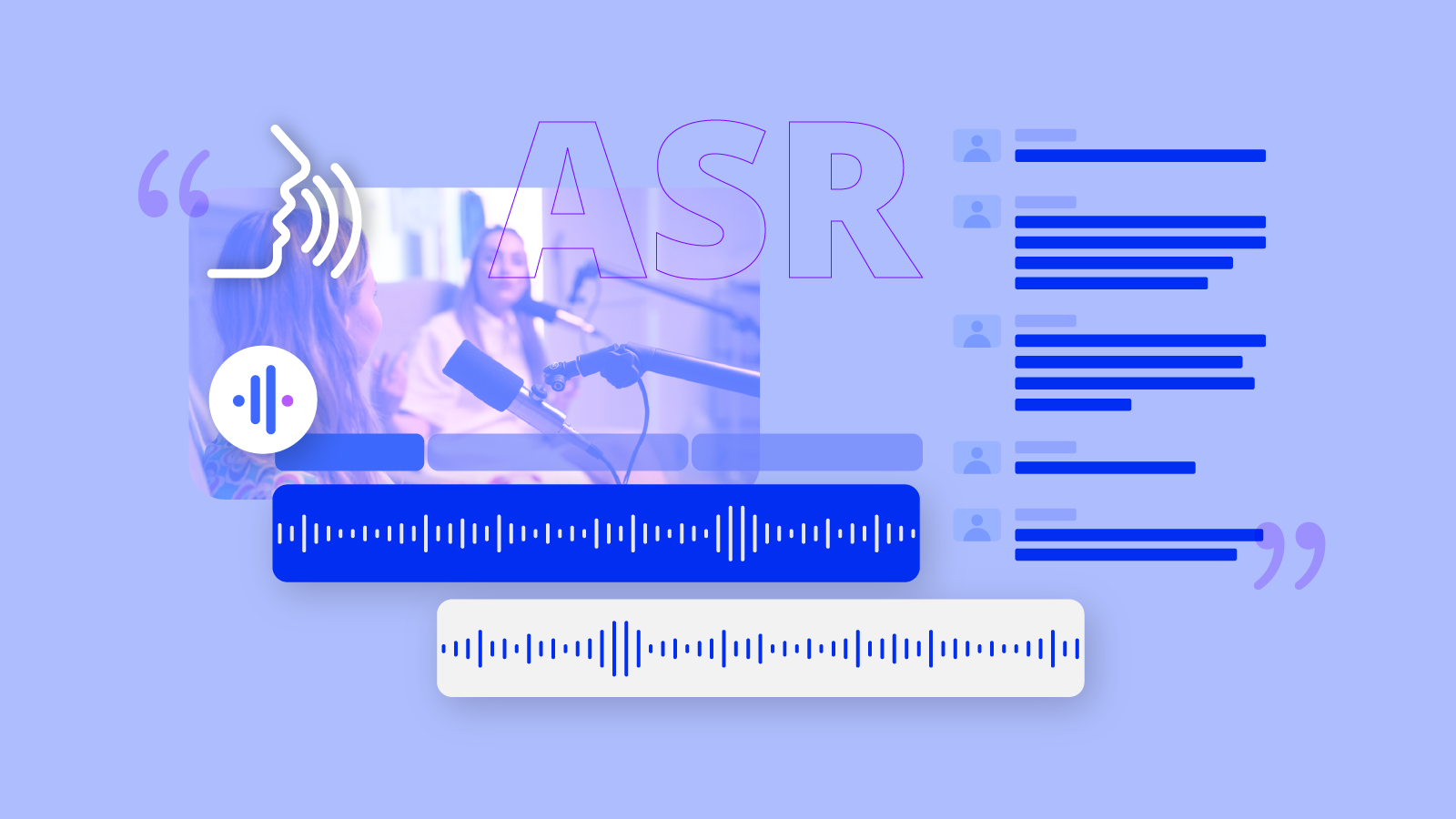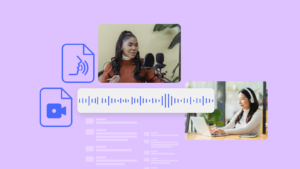One way in which artificial intelligence has modified the way we work, teach, learn and function, is through automatic speech recognition, otherwise known as ASR.
Automatic Speech Recognition (ASR) is a technology that allows computers to recognise and transcribe spoken language into written text. There are many applications to ASR systems, such as voice-to-text dictation software, virtual assistants, and call centre systems. They can also be trained to understand different languages, increasing its usability across different geographies and cultures.
How does ASR work?
Most ASR technology starts with an acoustic model representing the connection between audio signals, morphemes, and phonemes. An acoustic model takes sound waves and translate them into digital data. This is likened to a digital thermometer which takes an analog reading of the temperature and translate it to a digital value. Computational linguistics accounts for each sound in sequence and context to build words and sentences, which is then used by language and pronunciation models. This has been the standard procedure until recently. New studies are abandoning this multi-algorithm method in favour of a single neural network dubbed an end-to-end model. There are two methods by which the ASR system works:
- Traditional Hybrid Method
- End-to-End Method
Traditional Hybrid Method
The traditional hybrid method for automatic speech recognition (ASR) involves combining two different approaches to recognise speech: the rule-based approach and the statistical approach.
The rule-based approach consists of a set of rules used to map the sounds of a language to the corresponding words or phonemes. This approach is based on the understanding of the structure and rules of the language, and can be quite accurate when the rules are well-defined. However, it is difficult to create rules for all the possible variations and accents of a language, so the rule-based approach can be prone to errors.
The statistical approach uses a statistical model trained on a large dataset of transcribed audio to learn the patterns and relationships between the sounds of a language and the corresponding words or phonemes. This approach is more flexible and can handle a wider range of variations and accents, but it can also be less accurate than the rule-based approach. This is because it is based on patterns and relationships learnt from a dataset, rather than a fixed set of rules like the rule-based approach.
The traditional hybrid method combines the strengths of both approaches by using the rule-based approach to handle well-defined rules and the statistical approach to handle more complex and varied input. This can result in a more accurate and robust ASR system. However, the hybrid approach can be more complex and computationally intensive than either approach alone.
End-To-End System
End-to-end ASR systems typically use deep neural networks (DNNs) to learn the complex relationships between the audio signal and the transcription. They are trained on large datasets of transcribed audio and can handle a wide range of accents, pronunciations, and speaking styles. It directly predicts the transcription of an audio signal into written text, without the need for explicit intermediate steps such as phoneme or word recognition.
End-to-end ASR systems have several advantages over traditional hybrid systems that rely on explicit intermediate steps. They can be more accurate and efficient, and they can also be more flexible and adaptable to new languages and tasks. However, end-to-end ASR systems can also be more complex and require more data and computational resources to train.
Useful ASR Applications
ASR technology has improved significantly over the years and can now achieve high levels of accuracy in many contexts. Here are some examples of how ASR is used:
Dictation software
ASR is used to create dictation software that allows users to speak and have their speech automatically transcribed into text. This is helpful for people who prefer to speak rather than type, or who have mobility impairments that make typing difficult.
Virtual assistants
Virtual assistants such as Apple’s Siri use ASR to understand and respond to voice commands, bringing smart homes and convenience to our daily lives.
Call centres
At call centres, Interactive voice response (IVR) systems use ASR to enhance the customer experience. When integrated with other applications, ASR technology enables callers to perform self-service tasks. This includes checking account balances, as well as authenticating their identity for security.
ASR can also automatically generate transcripts for these calls, used for training purposes and quality assurance.
Education
The education sector uses ASR to help students with learning disabilities learn more efficiently. For example, many dyslexic children find it difficult to master their reading skills. ASR can help to identify reading mistakes and provide immediate intervention to correct reading mistakes.
Accessibility
ASR can be used to create accessible versions of written materials for people who are blind or have low vision.
Translation
ASR can transcribe and translate spoken language, allowing real-time communication between people who speak different languages.
Transcription softwares
Softwares like Auris AI utilises ASR technology to automatically generate accurate transcripts within seconds. This helps users save hours in their working process, as well as money from hiring a professional transcriber. Auris AI is available for free and you can try it out here.
Future Of Automatic Speech Recognition Technology
We are likely to see continued improvements in accuracy and performance of ASR technologies with the following developments:
Increased use of deep learning. Deep neural networks (DNNs) and other machine learning algorithms can to drive improvements in the accuracy and performance of ASR systems. DNNs are particularly well-suited to handle the complexity and variability of natural speech. In fact, many of the breakthroughs we see today are a result of developments through DNNs.
Multi-language and multi-accent support. ASR technologies are increasingly able to understand a wide range of language and accents. This can be beneficial for many applications, such as customer service and multilingual dictation.
Improved robustness. ASR systems are becoming more robust to noise, background distractions, and other factors that can degrade the audio quality. This will make ASR systems more useful in real-world settings, such as in crowded public places or noisy environments.
It’s worth noting that the field of ASR is a rapidly evolving. With these advancements, ASR will become increasingly accurate, reliable and widely adopted, eventually becoming an essential tool in our lives.






